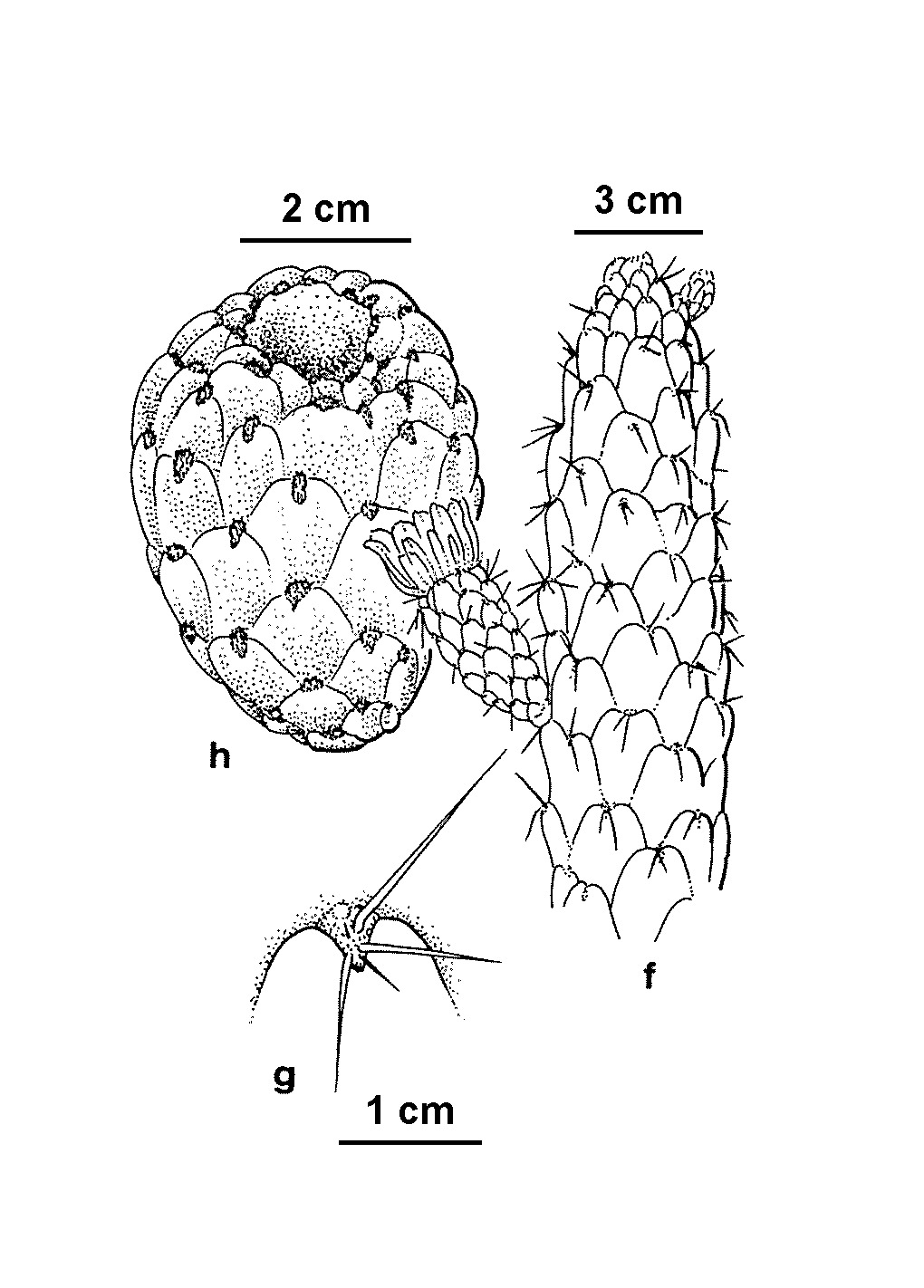Austrocylindropuntia
Erect spreading loosely-branched shrubs or rarely cushion-like or small trees to 5 m high. Stems cylindrical, with indefinite growth, sometimes divided into segments. Stem-segments (cladodes) cylindrical to somewhat clavate, distinctly tuberculate; tubercles elongate to ovate-rhomboid, slightly raised and rib-like, sometimes mamillate, firmly attached. Leaves restricted to young developing stems and on young hypanthia, rudimentary, caducous, terete, more or less subulate; areoles invested with glochids (few, scattered, white to pale yellow), spines, and hairs; spines 1–10, acicular or subulate, smooth, lacking a papery sheath. Flowers usually solitary, sessile, lateral or terminal, bisexual, regular; perianth caducous, segments numerous, spreading to erect, virtually free, inserted on hypanthium apex, deciduous; sepaloids forming a distinctive red-pink cap at bud stage; petaloids pink to red, erect or slightly spreading; stamens numerous, inserted in numerous rows; style thick, with 5 stigmas; ovary inferior, immersed within hypanthium. Fruit fleshy, indehiscent, with glochidiate areoles and sometimes spines, solitary or forming short chains of up to 4 by proliferation; seeds subglobular to irregularly angular, , with smooth to slightly rugose funicular envelopes covered with fine hairs, and a rudimentary funicular girdle.
Two species are naturalised in Australia. About 11 species, restricted to South America (Argentina, Bolivia, Ecuador, and Peru).
Austrocylindropuntia is one of several genera that have been segregated from Opuntia. Two key characters of Austrocylindropuntia, in addition to the absence of spine sheaths, are the cylindrical cladodes with indefinite growth, and a distinctive seed anatomy (Anderson 2001).
 Spinning
Spinning



